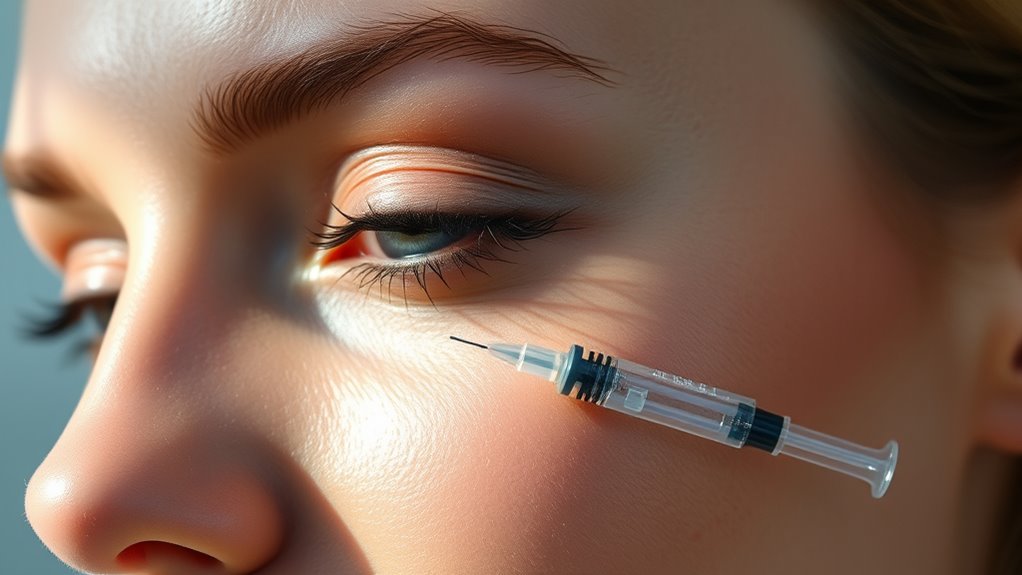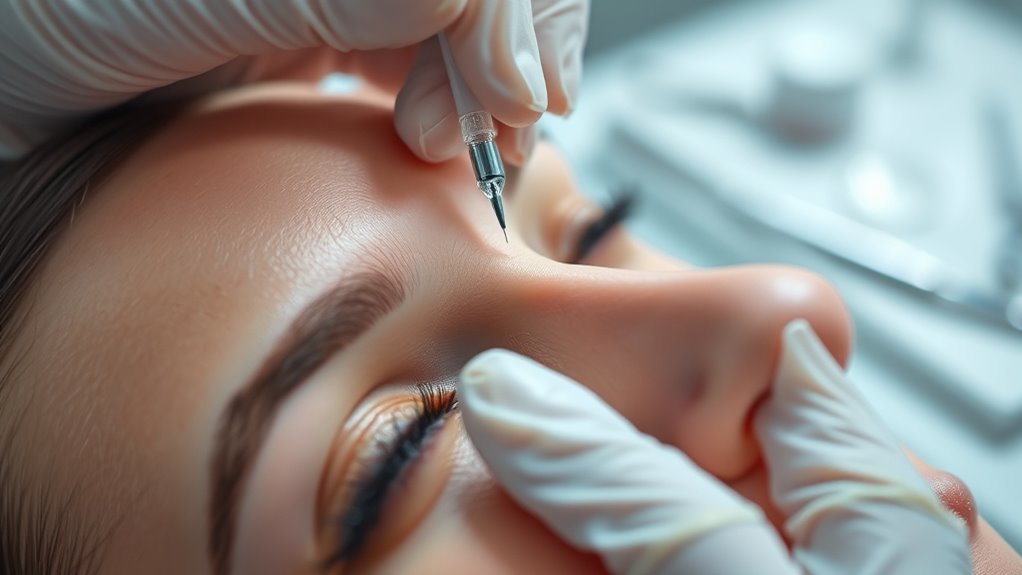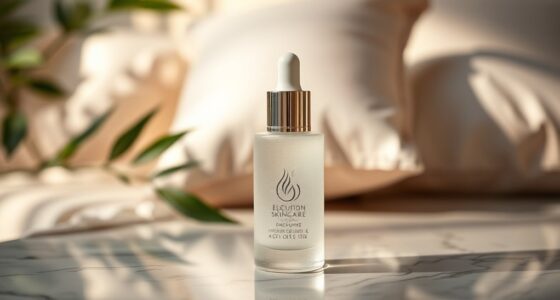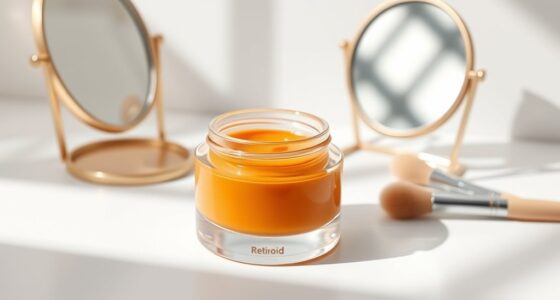Botox works by blocking nerve signals to relax muscles, reducing the appearance of dynamic wrinkles caused by movement, and its effects last about 3 to 6 months. Fillers are gel-like substances injected beneath the skin to restore volume and smooth static wrinkles, often providing immediate results that last from 6 months to 2 years. Understanding these distinct mechanisms can help you choose the right treatment—keep exploring to learn more about how each works to enhance your appearance.
Key Takeaways
- Botox is a neurotoxin that relaxes muscles by blocking nerve signals, reducing dynamic wrinkles.
- Fillers are gel-like substances injected beneath the skin to restore volume and smooth static wrinkles.
- Botox effects develop gradually over days to weeks, while fillers provide immediate visible results.
- Botox effects last about 3 to 6 months; fillers can last from 6 months up to 2 years depending on the type.
- Botox targets muscle activity; fillers physically add volume, and both are often combined for comprehensive rejuvenation.

Botox and fillers are popular cosmetic treatments that help you achieve a more youthful appearance. While they’re often used together, understanding how each works and how long their effects last can guide your decision-making. When comparing Botox vs. fillers, one of the key differences lies in their mechanisms and longevity. Botox is a neurotoxin that temporarily relaxes muscles, reducing the appearance of dynamic wrinkles caused by muscle movement. Fillers, on the other hand, are gel-like substances injected beneath the skin to restore volume, fill in creases, and smooth out static wrinkles.
With Botox, your provider injects small amounts into targeted muscles. Once inside, it blocks nerve signals, preventing muscle contractions. This relaxation leads to smoother skin and diminishes the formation of lines like crow’s feet, frown lines, and forehead wrinkles. The results typically appear within a few days and peak around two weeks. However, Botox isn’t permanent. Its effects usually last between three and six months, depending on factors like your metabolism, treatment area, and the dose used. Longevity comparisons show that Botox tends to have a shorter duration because it works by temporarily paralyzing muscles, which gradually regain function as the toxin wears off.
Fillers operate differently. They are injected directly into specific areas needing volume or contour correction. Common types include hyaluronic acid fillers, which attract water and add plumpness, and others like calcium hydroxylapatite or poly-L-lactic acid, which stimulate collagen production. When you get fillers, you often see immediate results, with some swelling or bruising expected initially. Because fillers physically add volume, their effects can last longer than Botox—anywhere from six months to two years, depending on the type used and the area treated. For example, hyaluronic acid fillers tend to last around six to twelve months, while thicker, more durable fillers might endure up to two years.
Frequently Asked Questions
Are Botox and Fillers Safe for All Skin Types?
Botox and fillers are generally safe for most skin types, but you should always consider skin type compatibility. People with sensitive skin or allergies may have a higher risk of allergic reactions, so it’s vital to discuss your medical history with your provider. They can perform tests or recommend suitable options. Always choose a qualified professional to minimize risks and guarantee the treatment suits your skin type.
How Long Does It Take to See Results?
You’ll typically see visible improvements within a few days to a week after your treatment. Timing expectations can vary depending on the specific procedure and areas treated. For Botox, you might notice results in about 3-5 days, with full effects around two weeks. Fillers often show immediate results, but subtle changes can continue to develop over the first week. Patience guarantees you get the best outcome.
Can Botox or Fillers Be Combined With Other Treatments?
You can combine Botox and fillers with other treatments for a customized, all-inclusive approach. This combination therapy targets multiple concerns, boosting your beauty benefits. You might pair Botox with laser treatments, chemical peels, or skincare routines to maximize results. Always discuss your goals with a professional, who can craft a personalized plan that combines treatments safely and effectively, ensuring you achieve your desired, dazzling, and youthful appearance.
What Are the Potential Side Effects or Risks?
You should be aware that Botox and fillers can cause adverse reactions such as swelling, bruising, or redness. Though rare, some people experience allergic reactions or infection risks. Long-term effects are still being studied, but repeated treatments might lead to muscle weakness or skin changes. To minimize risks, always consult a qualified professional, follow post-treatment care, and report any unusual symptoms promptly.
How Often Should Treatments Be Repeated for Maintenance?
You should typically repeat treatments every three to six months, depending on your individual response and the specific treatment. Following a proper maintenance schedule guarantees ideal results and minimizes potential side effects. It’s best to consult your provider for personalized guidance on treatment frequency, as they can tailor the schedule based on your goals and how your body responds over time. Regular sessions help maintain your desired appearance effectively.
Conclusion
Now that you understand how Botox and fillers work, you’re better equipped to make informed choices about your appearance. Think of these treatments as tools to smooth out wrinkles and restore volume, like a fresh coat of paint brightening a room. Remember, knowledge is your best ally—don’t let misconceptions cloud your judgment. With the right information, you can confidently navigate your options and keep your confidence shining brighter than ever.









